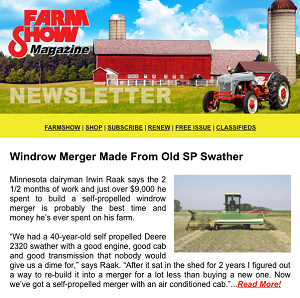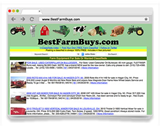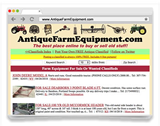Cast Iron Seat Collecting
Charolette Traxler purchasaed her first cast iron implement seat to paint as a household decoration. More than three decades later, she and her husband, Gordy, have a collection of dozens of old seats, and Charolette is secretary/treasurer for a group of 415 collectors who belong to the Cast Iron Seat Club.
"Our first seat was from a Deering, because we collect International Harvester tractors and farm with them," Traxler says. She and her husband soon discovered just how many models of seats were made. The "bible" for collectors, Cast Iron Implement Seats, by John D. Friedly, Jr., lists more than 2,000 seats.
Cast iron seats were common until the early 1900's. Some Amish and other "plain community" manufacturers still make them. People often mistakenly call them tractor seats, but they were made for horse-drawn implements and some old steam engines. Many different comopanies built the seats, and designs range from simple to intricate sometimes including the manufacturer's name. While many were scrapped during WWII metal drives, the old seats can still be found on equipment parked in fencerows or stashed in sheds.
As with any collectible, rare ones in good condition net the best price. For example, Emerson-Brantingham Implement Co. of Rockford, Ill., made about 20 seats with their name in the design for implements sold at a World's Fair. Those seats have the highest rating (10) among collectors and sell for $700 to $1,000.
When collections sell at auction, prices generally range from $25 to $400, Traxler says. The seats can still be found at flea markets and farm sales and on eBay, though collectors need to be wary of reproductions.
Traxler notes that sometimes people incorrectly believe a seat is a certain model because of the implement it was found on.
"Some farmers used to move one seat from implement to implement because it was the most comfortable to sit on," Traxler says.
Members of the Cast Iron Seat Club are dedicated to preserving the seats as well as corn planter lids, footrests, cast iron toolboxes and a variety of other items. Anyone interested in learning more is invited to attend the club's annual meet open to the public at the Little Log House Show in Hastings, Minn. (July 29-31, 2011). Or they can contact Traxler for more information.
Contact: FARM SHOW Followup, Charolette Traxler, 40874 231 Ave., Le Center, Minn. 56057 (ph 507 357-6142;gctrax@frontiernet.net).
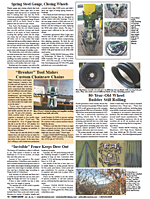
Click here to download page story appeared in.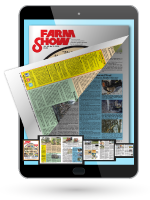
Click here to read entire issue
Cast Iron Seat Collecting AG WORLD Ag World Charolette Traxler purchasaed her first cast iron implement seat to paint as a household decoration More than three decades later she and her husband Gordy have a collection of dozens of old seats and Charolette is secretary/treasurer for a group of 415 collectors who belong to the Cast Iron Seat Club
Our first seat was from a Deering because we collect International Harvester tractors and farm with them Traxler says She and her husband soon discovered just how many models of seats were made The bible for collectors Cast Iron Implement Seats by John D Friedly Jr lists more than 2 000 seats
Cast iron seats were common until the early 1900 s Some Amish and other plain community manufacturers still make them People often mistakenly call them tractor seats but they were made for horse-drawn implements and some old steam engines Many different comopanies built the seats and designs range from simple to intricate sometimes including the manufacturer s name While many were scrapped during WWII metal drives the old seats can still be found on equipment parked in fencerows or stashed in sheds
As with any collectible rare ones in good condition net the best price For example Emerson-Brantingham Implement Co of Rockford Ill made about 20 seats with their name in the design for implements sold at a World s Fair Those seats have the highest rating 10 among collectors and sell for $700 to $1 000
When collections sell at auction prices generally range from $25 to $400 Traxler says The seats can still be found at flea markets and farm sales and on eBay though collectors need to be wary of reproductions
Traxler notes that sometimes people incorrectly believe a seat is a certain model because of the implement it was found on
Some farmers used to move one seat from implement to implement because it was the most comfortable to sit on Traxler says
Members of the Cast Iron Seat Club are dedicated to preserving the seats as well as corn planter lids footrests cast iron toolboxes and a variety of other items Anyone interested in learning more is invited to attend the club s annual meet open to the public at the Little Log House Show in Hastings Minn July 29-31 2011 Or they can contact Traxler for more information
Contact: FARM SHOW Followup Charolette Traxler 40874 231 Ave Le Center Minn 56057 ph 507 357-6142;gctrax@frontiernet net
To read the rest of this story, download this issue below or click
here to register with your account number.







